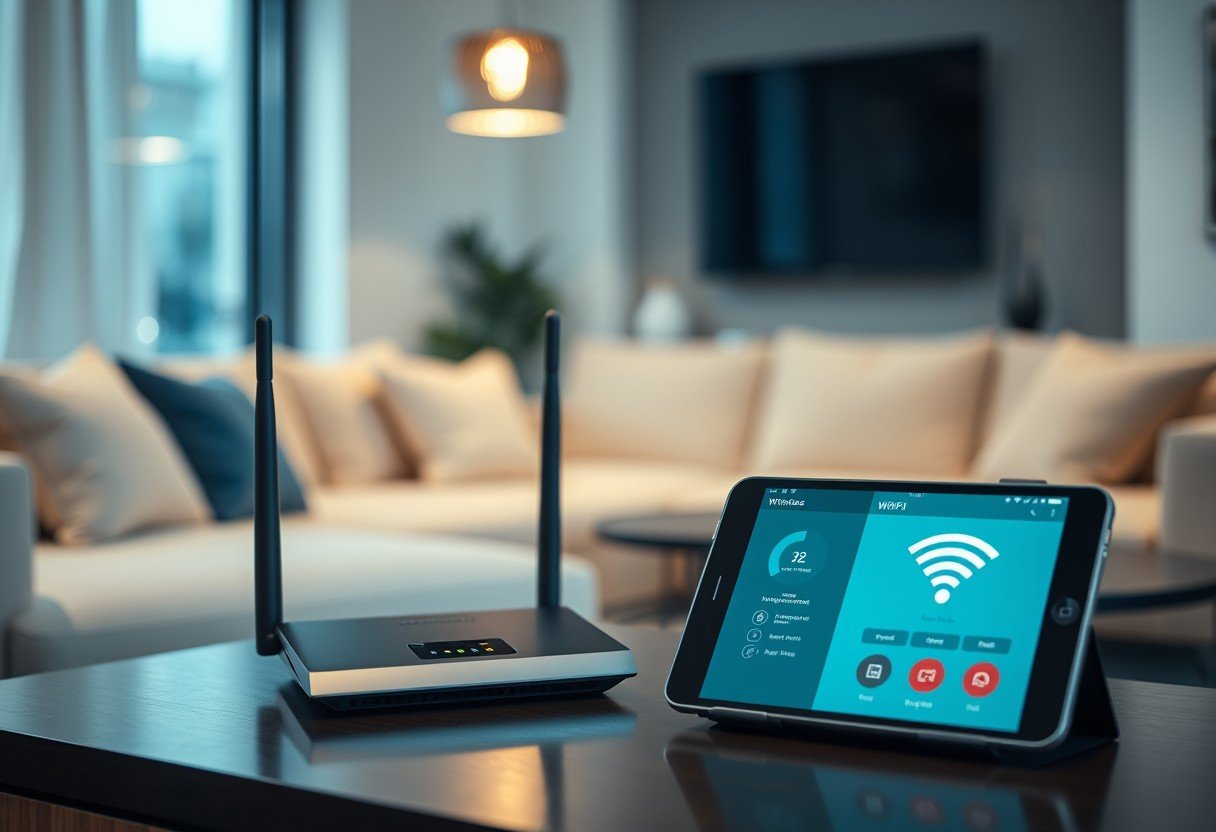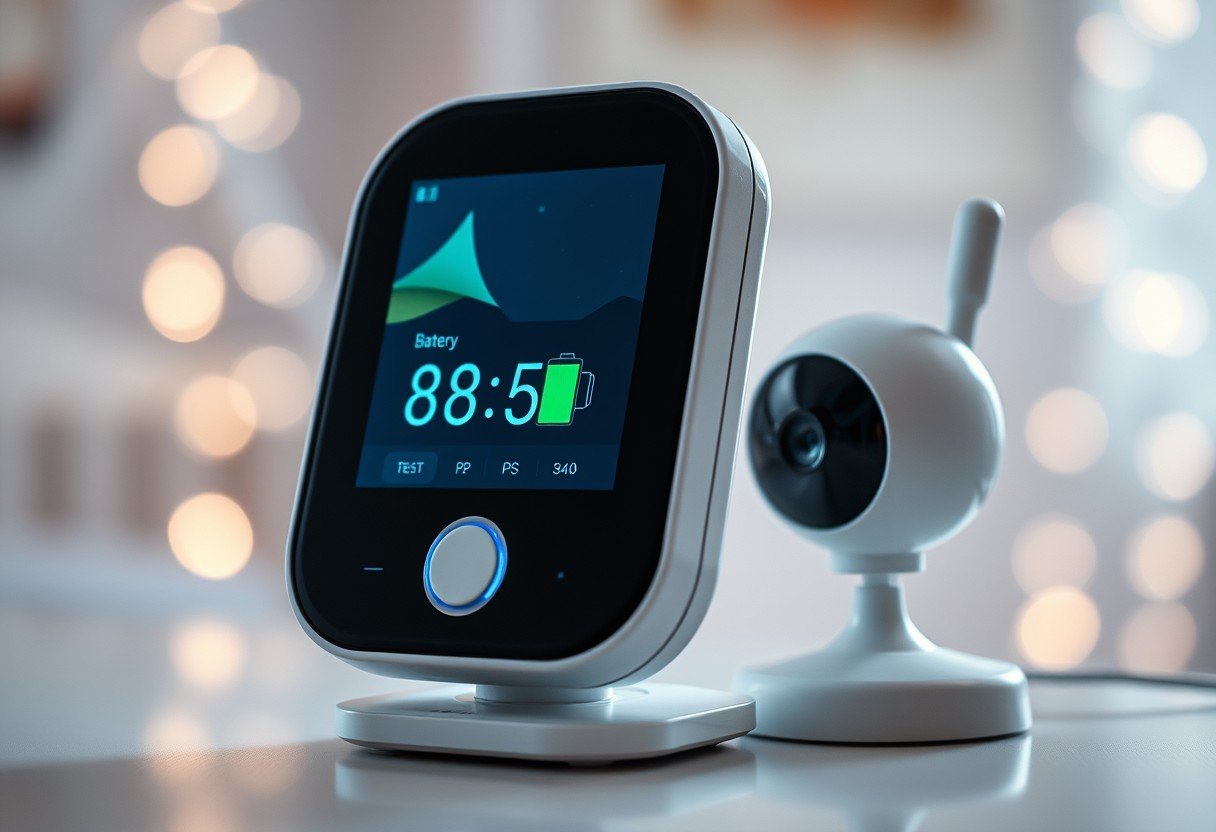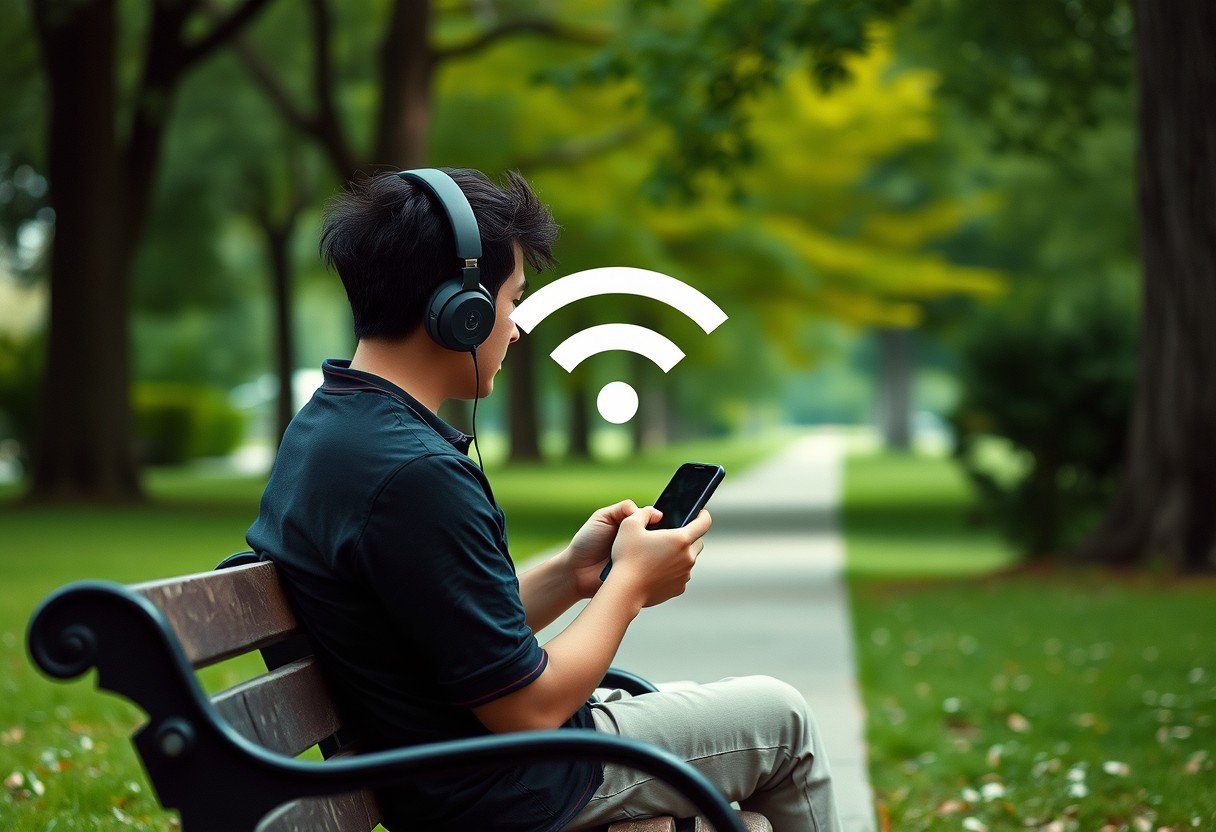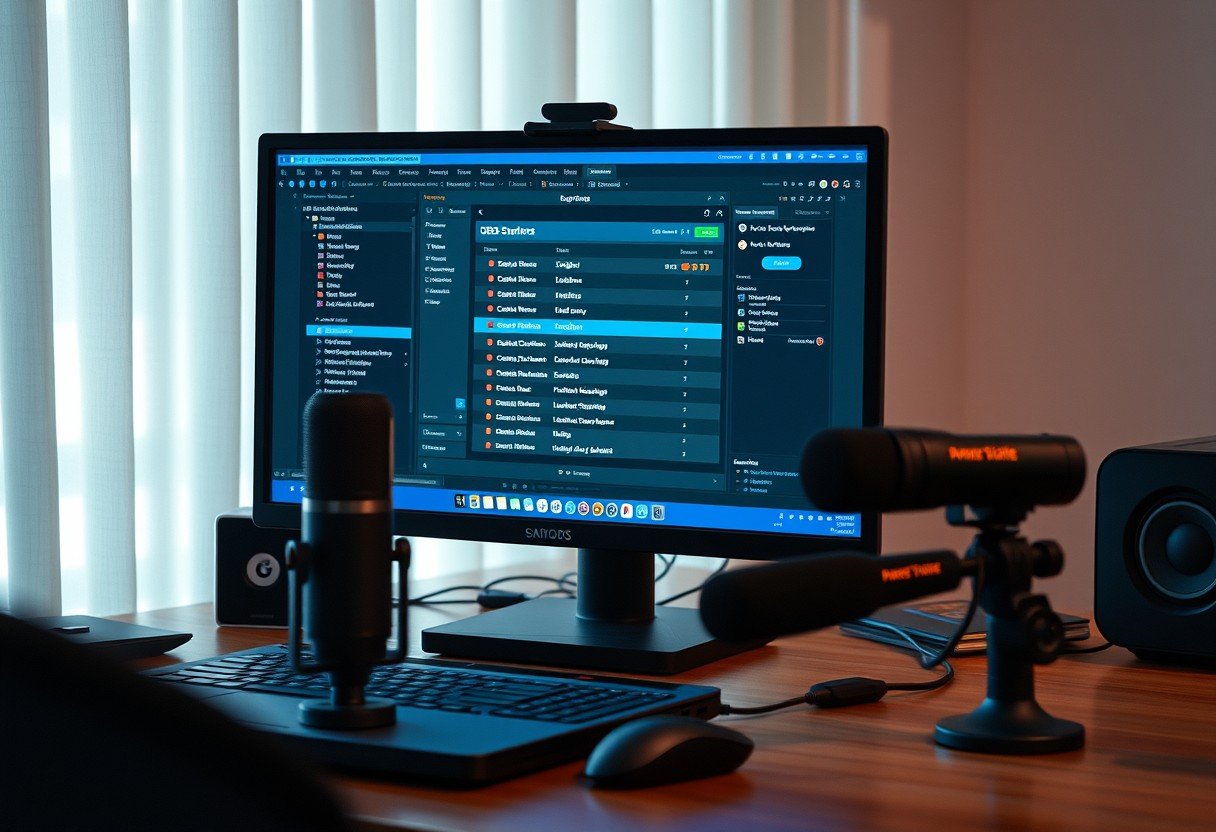Feeling stuck without a cable wall outlet in your home? You can still get fast and reliable internet. Whether you are in a new home, a temporary rental, or just want to move your setup, there are several easy ways to connect. This guide will show you how to use alternatives like mobile hotspots, satellite, and fixed wireless to get online without needing a traditional cable connection.
Mobile Hotspots as Your Portable Internet Solution
One of the simplest ways to get online without a cable outlet is by using a mobile hotspot. This feature, available on most smartphones, turns your phone into a portable Wi-Fi router, sharing its cellular data connection with your other devices like laptops and tablets.
This method is incredibly convenient for people who travel, work remotely, or need a temporary internet solution. The setup is quick and requires no extra equipment beyond your phone. You just need to activate the hotspot feature in your phone’s settings, set a password, and you’re ready to connect.
The key to a good hotspot experience is choosing the right mobile data plan. If you plan to stream videos or work all day, you will need a plan with a generous data allowance or an unlimited option to avoid slow speeds or extra charges. Many carriers now offer plans specifically designed for heavy hotspot usage.
Exploring Satellite Internet for Remote Areas
For those living in rural or remote locations, satellite internet is often a lifeline. This technology works by sending and receiving signals from a satellite in orbit to a dish installed at your home. It can provide internet access virtually anywhere, as long as the dish has a clear view of the sky.
According to the FCC, millions of Americans in rural areas still lack access to traditional broadband, making satellite a vital service. While older versions of satellite internet were known for being slow and laggy, modern services have improved significantly, offering faster speeds and more reliable connections.
However, it’s important to understand its limitations. Satellite internet typically has higher latency, which is the delay it takes for data to travel. This can make activities like competitive online gaming or real-time video conferencing challenging. Weather, such as heavy rain or snow, can also temporarily interfere with the signal.
Understanding Fixed Wireless Internet
Fixed wireless is another excellent alternative that bridges the gap between mobile hotspots and satellite. This technology delivers internet to your home using radio signals broadcast from a nearby tower to a small antenna or receiver installed on your property. It offers a stable and often faster connection than mobile data or satellite.
It is an especially great option for suburban and rural areas where laying cable is too expensive for providers. If you have a clear line of sight to a provider’s tower, you can get speeds that are competitive with traditional cable internet.
To get started with fixed wireless, you will need some specific equipment. Your provider will typically help you with the installation process to ensure you get the best possible signal.
- An outdoor antenna or receiver: This device is mounted on your roof or the side of your house to capture the radio signal.
- A modem or router: This connects to the antenna and creates the Wi-Fi network inside your home.
- Power supply equipment: Both the antenna and the indoor modem will need to be plugged in.
Before committing, always check the provider’s coverage map and ask about signal strength at your specific address to ensure it is a reliable option for you.
Key Factors to Consider Before Choosing
Choosing the right internet solution without a cable outlet depends entirely on your specific needs. Before making a decision, it is crucial to evaluate a few key factors to avoid frustration later on. Consider how you use the internet, your budget, and what is available in your location.
Your daily online activities will determine your speed requirements. If you mainly browse websites and check emails, a basic mobile hotspot plan may be sufficient. However, if your household streams 4K movies, plays online games, or has multiple people working from home, you will need a more robust solution like fixed wireless or a premium satellite plan.
Costs can also vary widely between these options. A mobile hotspot uses your existing phone plan, but heavy use might require a more expensive unlimited plan. Satellite and fixed wireless services have monthly subscription fees, and there might also be costs for equipment and professional installation.
Here is a simple breakdown to help you compare your options:
| Internet Type | Best For | Average Cost | Key Consideration |
|---|---|---|---|
| Mobile Hotspot | Travel, temporary use, light browsing | $20 – $60 / month | Depends on cellular reception and data caps. |
| Satellite Internet | Rural and remote locations | $50 – $150 / month | Higher latency; can be affected by weather. |
| Fixed Wireless | Suburban and rural areas with tower access | $40 – $100 / month | Requires a clear line of sight to a tower. |
How to Optimize Your Wireless Connection
Once your new internet service is set up, you can take a few simple steps to make sure you are getting the best possible performance. A weak or slow connection can often be fixed with a few minor adjustments to your setup, regardless of which type of service you choose.
The location of your router or hotspot device is critical. Placing your router in a central location in your home, away from walls and large metal objects like refrigerators, helps distribute the Wi-Fi signal more evenly. If you use a fixed wireless service, ensuring the outdoor antenna has an unobstructed view is just as important.
Here are a few necessary tips to keep your internet running smoothly:
- Limit connected devices: When you are doing something important like a video call, try to disconnect other devices that might be using up bandwidth.
- Reboot your router regularly: Simply turning your router off and on again once a week can clear out memory issues and refresh your connection.
- Update your firmware: Manufacturers release updates to improve performance and security. Check your router’s settings to make sure its firmware is up to date.
Additionally, securing your network with a strong password prevents unauthorized users from slowing down your connection. Following these tips will help you enjoy a faster and more reliable internet experience.
Frequently Asked Questions about Internet without a Cable Outlet
What is the easiest way to get internet without a cable outlet?
The easiest and quickest method is using your smartphone as a mobile hotspot. You can enable it in your phone’s settings to share your cellular data with other devices, requiring no extra equipment or installation.
Can I get fast internet without a cable connection?
Yes, you absolutely can. Fixed wireless internet can offer speeds comparable to cable, and some modern satellite services provide fast connections suitable for streaming and work, though availability depends on your location.
Is satellite internet good for online gaming?
Generally, satellite internet is not recommended for competitive online gaming. The high latency, or ping rate, caused by the long distance the signal travels can result in significant lag during gameplay.
What is fixed wireless internet?
Fixed wireless internet provides a broadband connection through radio waves. A signal is sent from a provider’s access point, like a tower, to a small antenna or receiver installed at your home.
Do I need special equipment for these options?
Yes, the equipment varies by service. A mobile hotspot only requires your smartphone. Satellite internet needs a dish and modem, while fixed wireless requires a receiver or antenna and a modem.
Are these options more expensive than cable internet?
The cost can vary. A mobile hotspot can be affordable if included in your phone plan, but heavy data use might be costly. Satellite and fixed wireless plans can be competitive with or sometimes more expensive than cable, especially when factoring in equipment and installation fees.









Leave a Comment